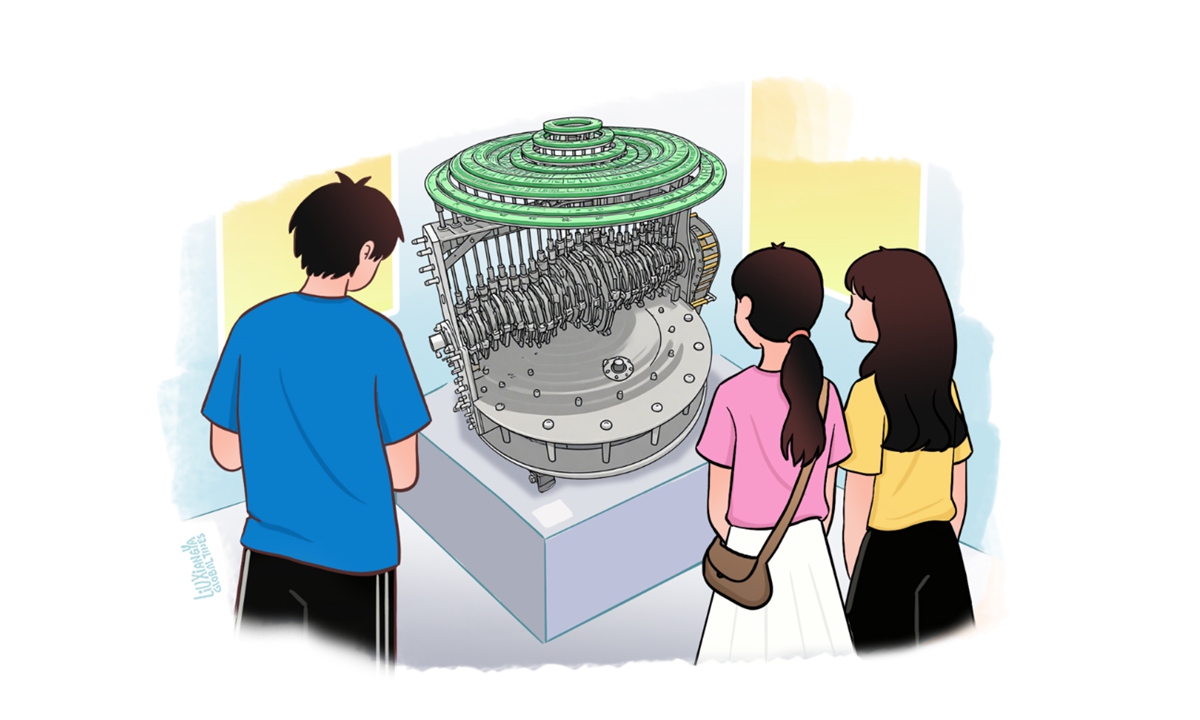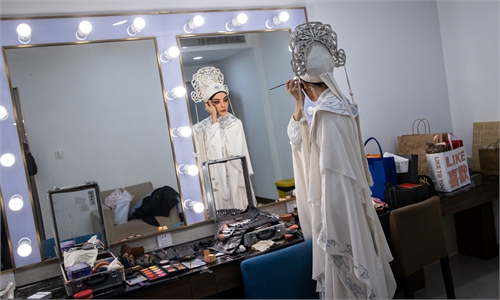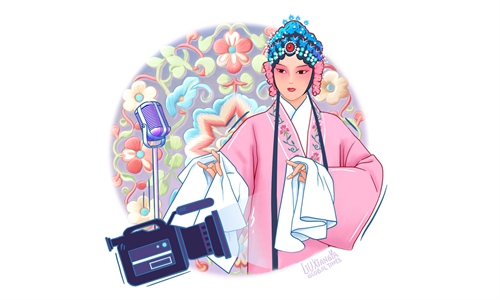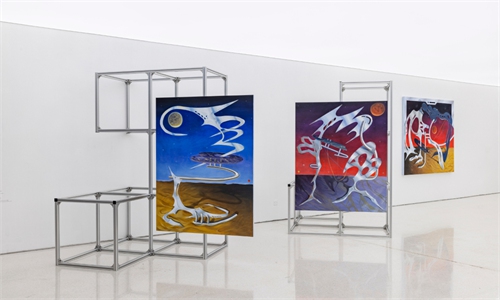ARTS / CULTURE & LEISURE
Graduation exhibitions showcase cultural fusion

Illustration: Liu Xiangya/GT
As the 2025 graduation season arrives, graduation exhibitions by art academies across China have become prisms reflecting what young artists are focusing on and value most in their creative practice. Be it a mechanical art installation featuring an ancient Chinese compass, or a futuristic industrial design inspired by traditional lacquerware, these works let us see how much Gen Z art creators value tradition while also seeing how seamlessly Chinese ancient legacies can be fused into contemporary artistic narratives.Named as Di Dong Yi, an artwork created by the China Academy of Art's graduate Nie Shichang was one of the many graduation works that have gone viral online recently, garnering over 680,000 views on Sina Weibo.
The centerpiece of this mechanical installation is a bronze-colored circular dial inspired by ancient Chinese compasses. The dial consists of rings of varying sizes, each connected to an underlying kinetic system that controls the rings' vertical movements. When activated, these rings undulate rhythmically, mimicking the motion of water ripples.
The "compass" representing "ancient Chinese geography-astronomy wisdom" is combined with a "mechanical system" representing "modern industrial growth" creates good visual tension in the piece, making one believe that art can bridge the past and the future.
However, "compass" was not just a visual aesthetic for the piece. It was deeply embedded in the work's logic, since the artist said that he aimed to explore the "nexus between miniature changes and the macro universal order" through creating the interaction between weaving ripples and a compass.
The abstract concept of Di Dong Yi might take a viewer a while to fathom, but one thing apparent is that today, young Chinese creators like Nie have figured out that using traditional elements must also consider the inclusive nature of Chinese culture. For example, the industrial-looking compass hints not only at history meeting the future, but also the East meets West, since modern industrial growth has its roots in the European industrial revolution.
"When contemporary artists use traditional elements, they must avoid repeating the tradition, but instead use it to create something new," Lu Hongbin, an art critic, told the Global Times.
Similar to Di Dong Yi, many other graduate works have transformed tradition into something new. At the Central Academy of Fine Arts (CAFA) graduation exhibition, a student designer explored the modern evolution of folk craftsmanship by blending Chinese lacquerware techniques with industrial design.
Another student work, Time Wall Shadow, takes inspiration from the Mogao Caves in Dunhuang. The piece reimagines the cultural legacy of women of different ethnic groups along the ancient Silk Road through integrating AI and digital interactive technologies.
Whether through folk craft embodied by lacquerware or the immovable cultural legacy represented by Dunhuang, these student works show how the diverse categories of Chinese culture can make artworks blossom and help artists highlight their specialties.
On the one hand, Chinese history can continue to feed young creators' inspiration and nurture more special artists. On the other hand, by holding tight to their cultural roots, young Chinese art creators can gradually find their own special stance in the broader art market.
"Sometimes, I do think our 5,000-year-old history is a privilege for us compared to many international artists," Yao Yi, a graduate of the Sichuan Fine Arts Institute, told the Global Times.
If China's 5,000-year history grants contemporary artists a "privilege," why can't contemporary art breath new vitality into ancient Chinese culture?
The relationship between contemporary art expression and traditional culture is reciprocal, and this can be observed from a dual aspect. First of all, the inclusive nature of contemporary art toward new technologies has made ancient cultural traditions more engaging to the public. Taking the digital art work Guangzhou City Walls that was created by a graduate at the Guangzhou Academy of Fine Arts as an example, the artist employed AI technology to reconstruct the old urban landscape that has disappeared from the city. The work helps viewers, particularly young people, to connect with a history that they never had a chance to see.
Additionally, contemporary art can help traditional heritage become a global art language. Compared to other art forms, contemporary art praises free and culturally synthetic expression. Take US contemporary artist Ryan Mitchell's porcelain pieces for example. They are abstract sculptures that look nothing like Chinese works, but the techniques of making such sculptures were hugely inspired by the Chinese porcelain tradition in Jingdezhen. The artist' contemporary porcelain shows the inclusivity and dynamism of Chinese ceramic culture. These works break the stereotype that Chinese porcelain works are doomed to look Chinese, thus encouraging more artists to explore the potential of Chinese porcelain.
From established artists like Mitchell to arts academy graduates redefining tradition's contemporaneity, integrating Chinese culture into contemporary works seems to have become a creative trend in art circles. The trend reveals not only artists' choices, but also implies how art academies are guiding students to develop culturally-grounded art approaches that prioritize contextual depth in Chinese culture. While graduation exhibitions may conclude, this creative trend will continue to gain momentum.
The author is a reporter with the Global Times. life@globaltimes.com.cn



